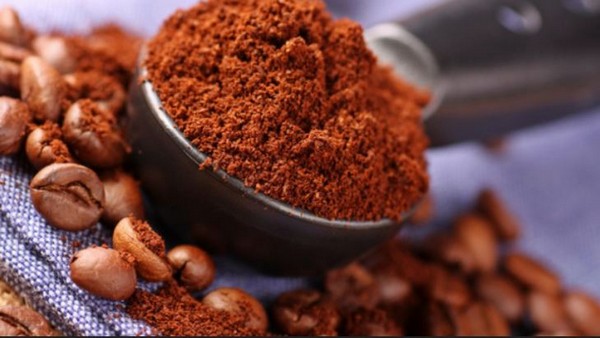Used Coffee Grounds: A Source of Antioxidant Nutrients?

The use of leftover coffee grounds as an antioxidant dietary fiber is a low-cost value-added opportunity for an otherwise waste product, say Spanish researchers.
Loss and wastage occurs on all steps in the food supply chain. About two kilograms of wet spent coffee grounds are produced for every kilogram of instant coffee made, which constitutes to about six million tonnes each year globally.
While uses in biofuels, composts, animal feed and enzymes have been explored, researchers from Madrid say there is now an increasing interest in food and health uses for the by-product.
According to their paper in the journal Food Chemistry, spent coffee grounds from industrial instant coffee are a promising natural source of antioxidant insoluble dietary fiber, proteins, essential amino acids and low glycaemic sugars, which could be used in bakery products in the future.
“These food formulations might be destined to people with reduced energetic intake and particular requirements,” wrote the team from the Autonoma University of Madrid (UAM) and the Spanish National Research Council (CSIC).
“The application of spent coffee grounds which we propose represents a value-added opportunity for coffee by-products utilization at a very low cost.”
One of the researchers behind the paper, Dr Maria Dolores del Castillo, told us the ingredient’s antioxidant potential added another attractive benefit to the fiber source.
“They are bioavailable antioxidants as they are using the dietary fiber as transport to the gastrointestinal tract,” said Dr Dolores del Castillo, senior scientist and head of the Food Bioscience Group at the UAM’s Institute of Food Science Research (CIAL).
“This should be cheaper [than other fiber sources] because it is a very abundant by-product.”
She said one manufacturer of coffee reported producing two tonnes of the grounds a day.
The paper comes as part of the research project SUSCOFFEE, which was backed by a 185,000 (Euros) grant from the Spanish Ministry of Economy and Competitiveness.
Her team was now seeking companies interested in the development and commercialisation of the food formulation under patent license.
“Its use as healthy food ingredient is a contribution to the bioeconomy and the reduction of the environmental impact of the coffee processing. The intake of antioxidants and particularly of antioxidant dietary fiber is suggested for the prevention of chronic diseases and the improvement of the gastrointestinal health,” said Dolores del Castillo.
Testing the Recipe
Using grounds from Spanish private label coffee maker Prosol, the researchers made up six different sugar-free sample biscuits with varying amounts of the grounds ranging from 3.5-4.4%.
Each prototype would be able to make the nutritional claims ‘source of fiber’ at more than 3 g fiber per 100 g biscuit or ‘high fiber content’ with over 6 g fiber per 100 g biscuit in the EU.
Stevia was also used for sweetness as well as Beneo-Orafti-donated oligofructose as an enhancer of glucose tolerance and prebiotic source.
Dolores del Castillo said taste of adding the grounds – which leads to a similar appearance in the biscuits to chocolate chips – was masked by these two ingredients.
They concluded that up to 4% of the grounds could be used as a food ingredient in solid foods like biscuits without affecting the quality of the product.
About 70% of a tasting panel ‘accepted’ the biscuits using the grounds and they said the biscuits tapped into consumer interest in healthier alternatives.
“Consumers are concerned about caloric content and glycaemic index (GI) of the food as well as balanced nutrition comprising dietary fiber content,” they wrote.
“The benefits of low GI diets extend beyond weight loss and have favorable effects on obesity-related diseases such as type 2 diabetes.”
Super Fiber?
Caffeine and the antioxidant chlorogenic acid (CGA) are the major bioactive compounds of coffee.
The freeze-dried spent coffee grounds 200 mg caffeine per 100 g and 10 mg CGA per 100 g.
Yet said Dolores del Castillo said this coffee content was minimal working out at about 8 mg per 100 g of dough. This is far below that which would require an on-pack warning for pregnant women and children in the EU.
The grounds also contained a “significant” amount of proteins as well as essential amino acids glutamic acid, threonine, aspartic acid and leucine.
Source(s):
preventdisease.com
naturalblaze.com
sciencedirect.com
http://www.healthfreedoms.org/used-coffee-grounds-a-source-of-antioxidant-nutrients/